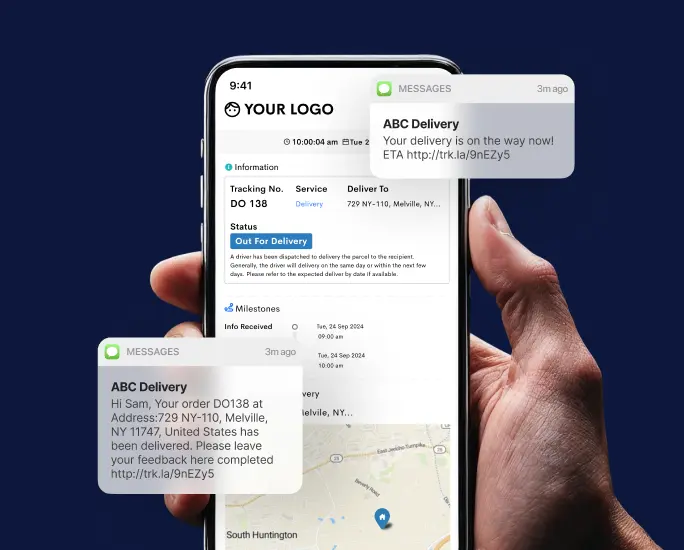When it comes to floral logistics, the best practices are essential in order to ensure that your flowers arrive at their destination in perfect condition.
There are a few things to keep in mind when you’re arranging for flower delivery, so read on for our top tips!
Tips On Managing Floral Logistics
Be Smart With Space
Floral logistics can be a challenge for even the most experienced event planners. There are a few key things to keep in mind when managing floral logistics for your next event. Make sure you have enough space for your flowers.
Floral arrangements can take up a lot of space, so it’s important to make sure you have enough room for them. Keep your flowers cool and away from direct sunlight. Flowers are delicate and need to be kept in cool, dark areas to stay fresh.
Make sure your arrangements are not too close to each other. If they are, the flowers will start to wilt and won’t look their best.
Have a plan for what to do with the flowers after the event. You don’t want your beautiful arrangements to go to waste, so make sure you have a plan for where they will go once the event is over.
Establish A Temperature Monitoring Solution
Managing floral logistics can be a challenge, particularly when it comes to temperature. Hot or cold temperatures can damage delicate flowers, affecting both their appearance and their lifespan.
A temperature monitoring solution can help you keep track of the temperature in your floral storage facilities, ensuring that your flowers are kept at the optimal temperature at all times. This can help to extend the life of your flowers and keep them looking their best.
There are a few things to consider when choosing a temperature monitoring solution for your business, including the type of sensor you need, the size of your storage facilities, and the frequency of data collection.
The type of sensor you need will depend on the type of flowers you are storing. For example, if you are storing roses, you will need a sensor that can measure the temperature of the water in which they are stored. The size of your storage facilities will also affect the type of sensor you need.
If you have a large storage facility, you may need a more sophisticated sensor that can cover a larger area. The frequency of data collection is another important consideration. If you need to monitor the temperature in your storage facilities daily, you will need a sensor that can collect data at least once per day.
Adopt RFID Technology
RFID technology is a boon to the logistics industry, where time and accuracy are of the utmost importance. Floral logistics is one area where RFID can have a major impact.
By tagging each flower with an RFID tag, growers and shippers can track the progress of their product from farm to market, ensuring that it arrives fresh and on time. This information can also be used to optimize the supply chain, ensuring that flowers are shipped only when they are ready to be sold.
The benefits of RFID technology are not limited to growers and shippers. Retailers can also use RFID tags to track the progress of their flowers from the market to the store shelf. This information can be used to ensure that flowers are properly rotated and that they are not overstocked.
By using RFID tags, retailers can also provide their customers with real-time information about the availability of specific flowers.
Implement A Delivery Solution
Software that manages floral logistics needs to consider many factors to be effective. This includes the type of flowers being delivered, the distance the flowers need to travel, and the condition of the flowers upon arrival.
The first step in implementing delivery software is to map out the route that the flowers will take. This will ensure that the flowers arrive at their destination on time and in good condition.
The software should also take into account the different types of flowers that will be delivered. This is important because some flowers are more delicate than others and need to be handled with care.
Once the route has been mapped out, the software should then track the progress of the delivery. This will allow the software to provide updates to the customer or the florist if there are any delays. The software should also be able to send notifications if the delivery is running late.
The last step in implementing delivery software is to make sure that it is compatible with the current infrastructure. This includes making sure that it can connect to the internet and that it can be used with the current software that is in place.
What Can A Delivery Software Do With Your Business?
Good delivery software can automate many of the tasks associated with managing a delivery business. It can track and manage orders, customers, drivers, vehicles, and more. This can help you to save time and money, and to improve your customer service.
Some delivery software programs also include features such as GPS tracking, route planning, and dispatch. This can help you to keep your drivers safe and efficient, and to ensure that your customers receive their orders on time.
If you are considering using delivery software for your business, it is important to choose a program that will meet your specific needs. There are many different types of delivery software available, so it is important to do some research to find the best one for your business.
Conclusion
No matter what stage of the planning process you are in, reviewing these floral logistics best practices should help to set your event up for success.
Always take into account the amount of time that each element will take to complete as well as working around potential roadblocks like traffic or construction.
When in doubt, always err on the side of caution and allow yourself more time than you think you need. By following these tips, your event is sure to be a beautiful and stress-free success!










